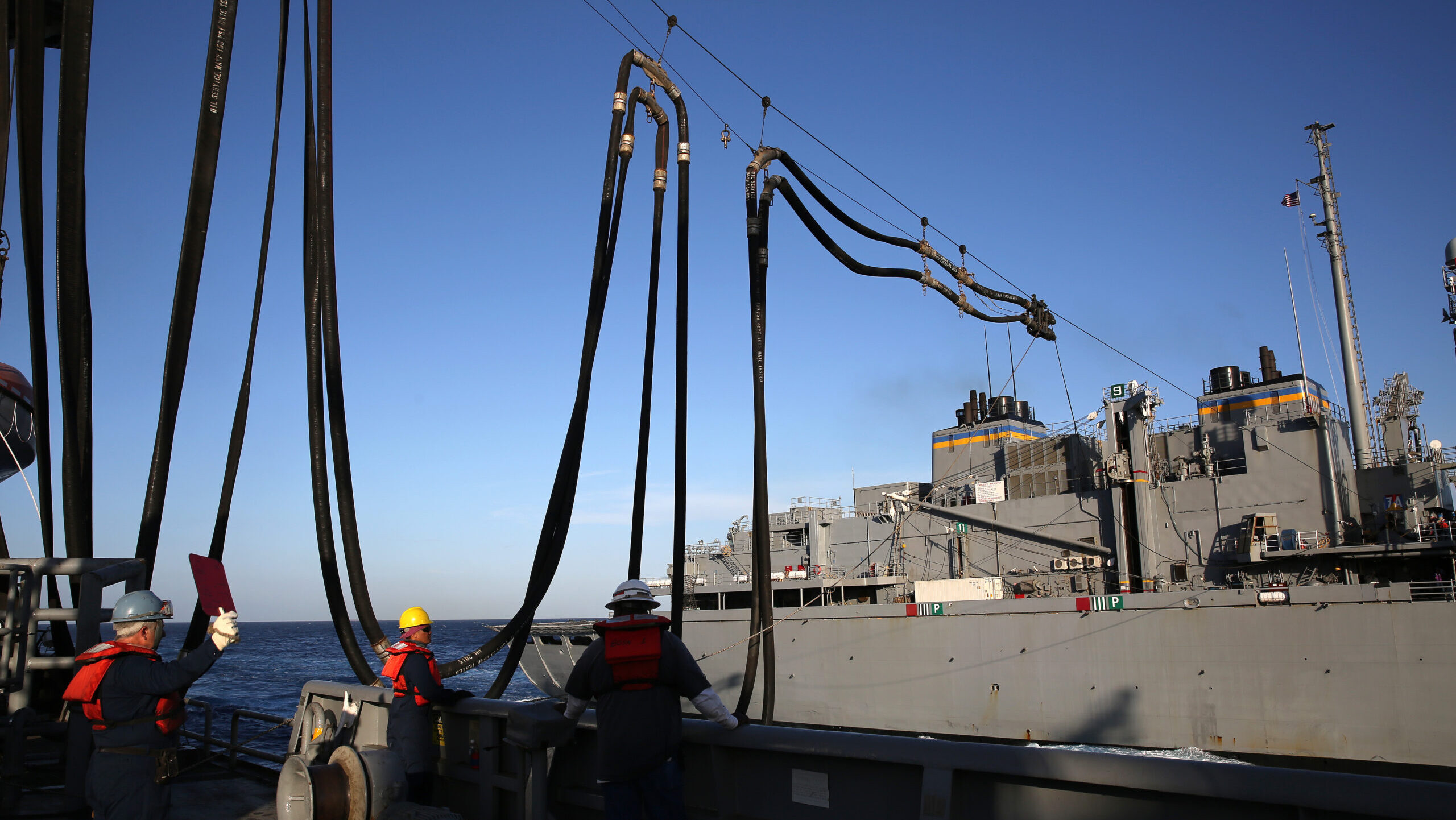
The fuel line of the fleet replenishment oiler USNS John Ericsson (T-AO 194) is deployed during a replenishment at sea operation of the fast combat ship USNS Rainier (T-AOE 7. (U.S. Navy photo by Grady T. Fontana/Released)
WEST 2024 — A top Navy admiral in the Indo-Pacific, and the nominee to lead the region’s joint force, warned the Combat Logistics Force is on “narrow margins” at a time when both the Pentagon and outside analysts are closely watching for a pending conflict between China and Taiwan.
“We postulated in 1992 that we would operate from the sea and then we would enjoy complete command of the sea and our defense industrial base followed,” Adm. Samuel Paparo, commander of US Pacific Fleet, told an audience in San Diego last week. “And now as a result, we find ourselves in a 21st century changing security environment with a late 20th century defense industrial base that’s oriented on efficiency instead of effectiveness, and we’re on the razor’s edge.”
To combat that issue, the Navy should advocate for a “larger, more modernized, more capable Combat Logistics Force,” he said.
RELATED: ‘Constant stare’: US Pacific commander wants AI to tell Chinese military exercises from invasion
As the head of US Pacific Fleet, Paparo is one of the Navy’s top operational officers in the Indo-Pacific, and by extension, responsible for fleet operations in the event China were to attempt to forcibly take control of Taiwan. In July 2023, President Joe Biden nominated Paparo to become the next commander of Indo-Pacific Command, meaning that, if confirmed, Paparo will become the top American military officer in the region.
The Combat Logistics Force, ships owned by Military Sealift Command and operated by civil service mariners, are collectively responsible for supplying Navy warships underway with fuel, food, ordnance, spare parts and any other supplies sailors may need. According to a 2023 Military Sealift Command document, the CLF has roughly three dozen ships stretched across three classes in its inventory.
During his Feb. 14 keynote remarks Paparo said, “it’s absolutely, critically important to raise our level within the Combat Logistics Force.”
“When we run [war]games, the red team goes for the Combat Logistics Force every single time,” he continued.
Paparo specifically called for greater “CONSOL” tanking capacity to pass fuel in a “bucket brigade” mentality to the front lines without excessively risking the safety of civilian crews and their ships.
“CONSOL capability is when a specially outfitted Military Sealift Command-controlled tanker conducts underway refueling operations, transferring cargo to a fleet oiler at sea,” according to a Defense Logistics Agency statement issued in 2015 to mark the revival of the practice for MSC. “CONSOL operations save oilers like [USNS] Rappahannock time by not having to enter ports and refuel. The direct delivery of fuel to the fleet achieves cost avoidance associated with fleet oiler round trips to a port for replenishment and increases on-station-time.”
CONSOL tanking is not new to the Navy and MSC, which had done it for decades prior to the 1990s, but the practice had fallen off when the focus of American military operations shifted to US Central Command during Desert Shield and Desert Storm, according to DLA.
Sal Mercogliano, a professor at Campbell University in North Carolina and an expert in maritime history and operations, told Breaking Defense that the Navy may not always have the advantage of sustaining its forces close to DLA sites ashore.
“In a peer-to-peer conflict we may be needing to move fuel across thousands of miles of contested oceans and that means we need dedicated oilers with defenses (currently MSC oilers have no defense) and shuttle ships to run the fuel from the continental US to intermediate bases or to refuel oilers,” he said.
To close his remarks to West’s industry-oriented audience, Paparo urged the crowd to take up his alarm.
“The logic of food, fuel, ammo, medical, building supplies — that logic is not going to be solved with an app,” he said. “It takes lift, and as the world knows the most effective, efficient lift is over the sea. We’re doing some things about it. It ain’t enough. We alone can’t do it. We need all your help on that.”








